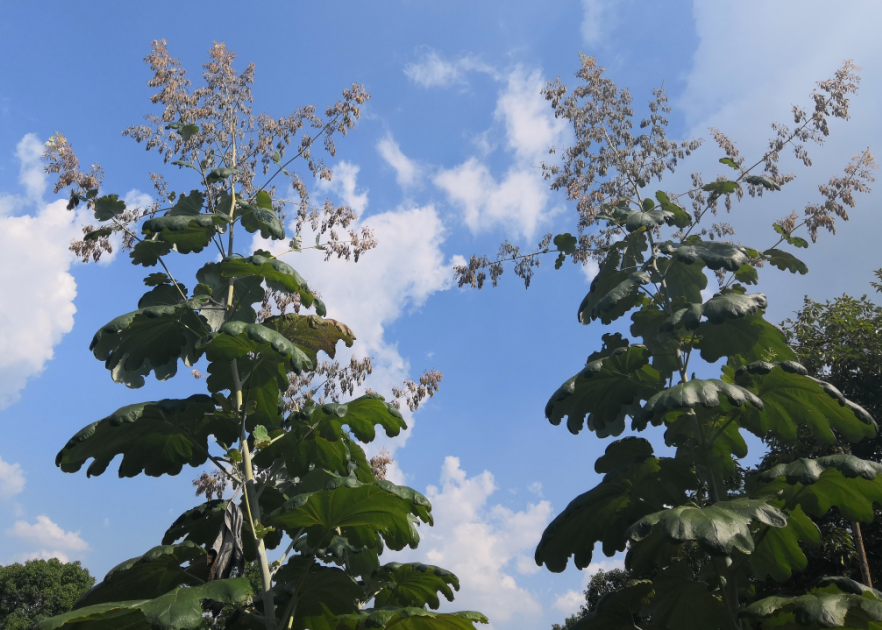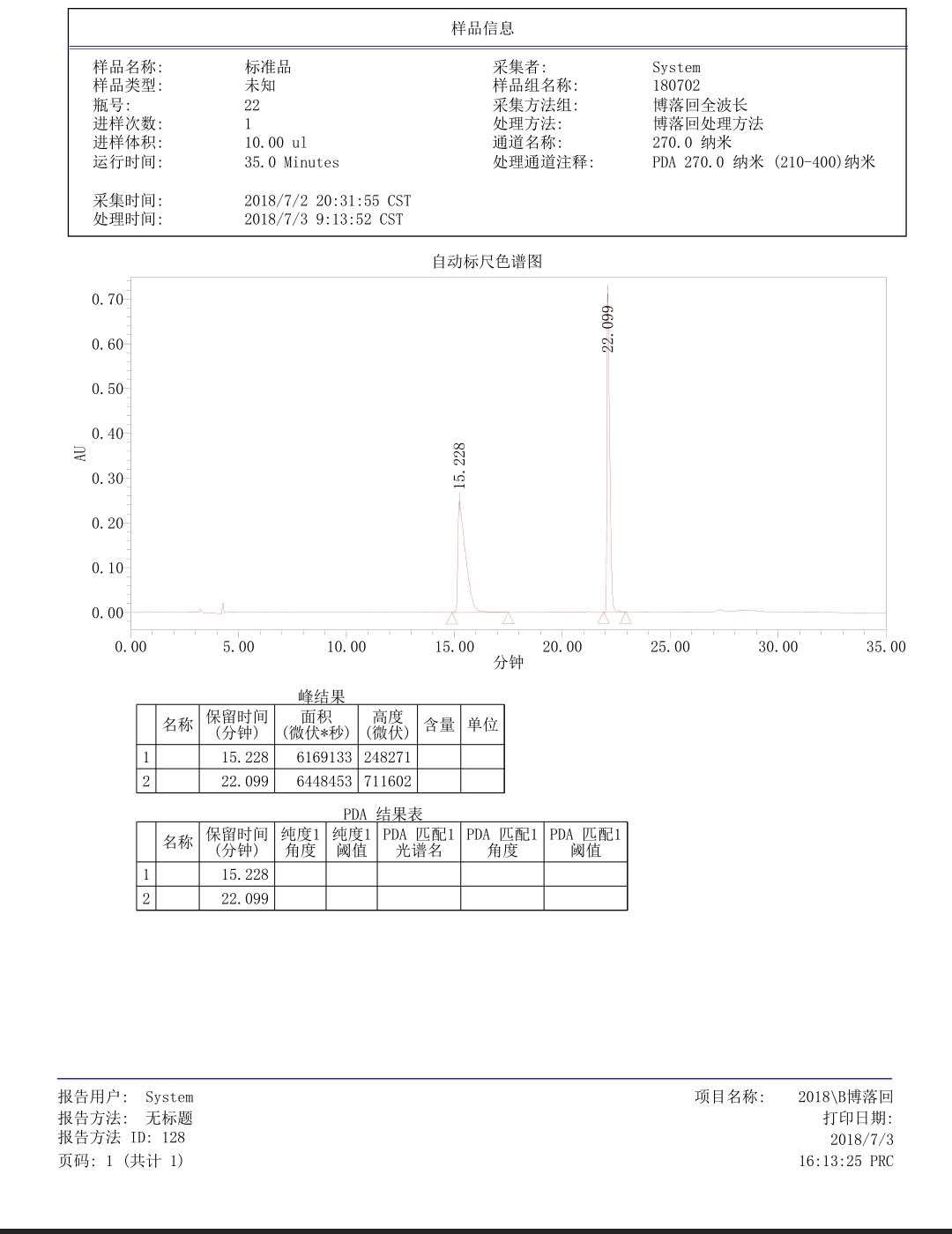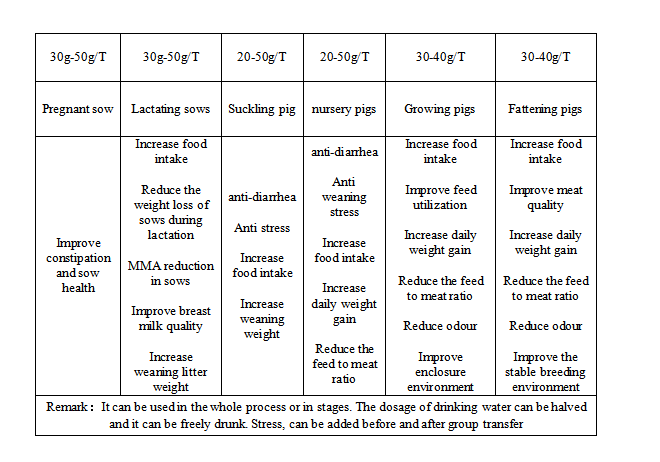Macleaya cordata extract
Total alkaloids 60%
Main active ingredients:Sanguinarine,Chelerythrine
CAS No.:11205-60-2,5578-73-4,476-32-4
Appearance: Yellow orange fine powder
Test Methon:HPLC
Purity:1-60%
About Macleaya cordata extract
Macleaya cordata is a bloodroot which owns thousand year history of medicinal usage in China. 13 kinds of alkaloids and other compounds such as sanguinarine toddaline, protopine, a-allocryptopine, bocconine, rhizoma coptidis alkali,berberine, samin alkali and protopine are in the root and aerial parts.
Macleaya cordata extract contains sanguinaine and chelerythrine, which have fungicidal and insecticidal activity. Sanguinarine (pseudochelerythrine) is a potent inhibitor of NF-kappaB activation, IkappaBalpha phosphorylation, and degradation.
Macleaya cordata contains several alkaloids including sanguinarine, chelerythrine,protopine, and allocryptopine. Our product, Macleaya cordata extract mainly constains with sanguinarine and chelerythrine. It was been show to be reversible inhibitors of the enzymatic hydrolysis of acetylthiocholine.
| Macleaya cordata extract |
||||
| Active Ingredients |
Specs |
Test Method |
Appearance |
Solubility |
| Total alkaloids |
60% |
HPLC |
Orange yellow powder |
Soluble in water |
| Sanguinarine |
40% |
HPLC |
Orange yellow powder |
|
| chelerythrine |
20% |
HPLC |
Orange yellow powder |
|

Macleaya cordata extract Function:
1. The microbial disease,anti-inflammatory effects;
2. Insecticidal role;
3. Kill maggots;
4. Improve liver function and enhance immunity;
5. Can be widely applied to feed additives, antibacterial agent, pesticides, veterinary drugs, disinfectants, etc.
Macleaya cordata extract Application:
1. Applied in Food field;
2. Applied in Pharmaceutical field;
3. Applied in Feed additives field.
Macleaya cordata extract HPLC
Macleaya cordata extract HPLC
1.HPLC condition
Column:Hyper ODS C18
Detector: 270nm
Mobile Phase: AcCN:H2O =40:60
Flow Rate:1ml/min
Column length:200mm
Column diameter: 4.6mm
Pressure: 8.5 Mpa
Column temperature: room temperature
Injection volume: 5μl
2. Procedure
Standard preparation /calibration
Accurately weigh 5mg Sanguinarine Reference Substance solution into 50ml Brown bottle. Add mobile phase to the scale, shake it well. Take 2ml of precise measurement and put it in 25 ml brown bottle, add methanol to the scale,shake it well, then abtain a susbstance solution.
Samples preparation
Accurately weigh appropriate amount of Macleaya cordata extract sample, into 50 ml Brown volumetric flask,Add 30ml mobile phase and Ultrasound oscillation for about 30 minutes.Static to room temperature compatibility to mobile phase,filter through a 0.45μm PTFE filter then get the obtain a sample solution.
3. Determination method
Precise absorption respectively of reference solution and sample solution for 5ml each,Injection liquid chromatography and determination it ,and then it can be obtained.


Recommend Dosage

Macleaya cordate extraction process
Macleaya cordata fruit pod - - select and remove impurities - - - drying - - - heat to extraction (adjust PH to acidity) - - adjust PH to alkalinity - - - Filtering - - - filtering residue and ethanol dissolution - - - concentration - - - Filtering- - - drying - - - crush
-
References:
-
Bergstrom, K.S.B., Kissoon-Singh, V., Gibson, D.L., Ma, C.X., Montero, M., Sham, H.P., Ryz, N., Huang, T.N., Velcich, A., Finlay, B.B., et al. (2010). Muc2 protects against lethal infectious colitis by disassociating pathogenic and commensal bacteria from the colonic mucosa. PLoS Path 2010, 6
-
Bevins, C.L., and Salzman, N.H. (2011). Paneth cells, antimicrobial peptides and maintenance of intestinal homeostasis. Nat Rev Micro 9, 35–368.
-
Casewell, M., Friis, C., Marco, E., McMullin, P., and Phillips, I. (2003). The European ban on growth-promoting antibiotics and emerging consequences for human and animal health. J Antimicrobial Chemother 52, 159–161.
-
Chirino, Y.I., and Pedraza-Chaverri, J. (2009). Role of oxidative and nitrosative stress in cisplatin-induced nephrotoxicity. Exp Toxicologic Pathol 61, 223–242.
-
Dvorák, Z., Sovadinová, I., Bláha, L., Giesy, J.P., and Ulrichová, J. (2006). Quaternary benzo[c]phenathridine alkaloids sanguinarine and chelerythrine do not affect transcriptional activity of aryl hydrocarbon receptor: Analyses in rat hepatoma cell line h4iie.Luc. Food Chem Toxicol 44, 1466–1473.
-
Fairbrother, J.M., Nadeau, É., and Gyles, C.L. (2005). Escherichia coli in postweaning diarrhea in pigs: An update on bacterial types, pathogenesis, and prevention strategies. Anim Health Res Rev 6, 17–39.
-
Fleckenstein, J.M., Hardwidge, P.R., Munson, G.P., Rasko, D.A., Sommerfelt, H., and Steinsland, H. (2010). Molecular mechanisms of enterotoxigenic Escherichia coli infection. Microb Infect 12, 89–98.
-
Gao, R., Li, Y., Lin, J., Tan, C., and Feng, Y. (2016). Unexpected complexity of multidrug resistance in the mcr-1-harbouring Escherichia coli. Sci China Life Sci 59, 732–734.
-
Jang, M.K., Kim, S.H., Lee, K.Y., Kim, T.B., Moon, K.A., Park, C.S., Bae, Y.J., Zhu, Z., Moon, H.B., and Cho, Y.S. (2010). The tyrosine phosphatase, SHP-1, is involved in bronchial mucin production during oxidative stress. Biochem Biophys Res Commun 393, 137–143.
-
Jia, Z., Zhu, H., Li, J., Wang, X., Misra, H., and Li, Y. (2012). Oxidative stress in spinal cord injury and antioxidant-based intervention. Spinal Cord 50, 264–274.
-
Kuo, C.T., Liu, T. H., Hsu, T.H., Lin, F.Y., and Chen, H. Y. (2016). Protection of Chinese olive fruit extract and its fractions against advanced glycation endproduct-induced oxidative stress and pro-inflammatory factors in cultured vascular endothelial and human monocytic cells. J Funct Foods 27, 526–536.
-
Li, N., and Neu, J. (2009). Glutamine deprivation alters intestinal tight junctions via a PI3-K/Akt mediated pathway in Caco-2 cells. J Nutrit 139, 710–714.
-
Liu, G., Aguilar, Y.M., Zhang, L., Ren, W., Chen, S., Guan, G., Xiong, X., Liao, P., Li, T., Huang, R., et al. (2016). Dietary supplementation with sanguinarine enhances serum metabolites and antibodies in growing pigs. J Anim Sci 94, 75–78.
-
Liu, G., Ren, W., Fang, J., Hu, C.A.A., Guan, G., Al-Dhabi, N.A., Yin, J., Duraipandiyan, V., Chen, S., Peng, Y., et al. (2017). L-glutamine and l-arginine protect against enterotoxigenic Escherichia coli infection via intestinal innate immunity in mice. Amino Acids 49, 1945–1954.
-
Ni, H., Martínez, Y., Guan, G., Rodríguez, R., Más, D., Peng, H., Valdivié Navarro, M., and Liu, G. (2016). Analysis of the impact of isoquinoline alkaloids, derived from Macleaya cordata extract, on the development and innate immune response in swine and poultry. Biomed Res Int 2016 (4), 1–7.
-
Ren, C., Zhao, D., and Zhu, L. (2016). Use of N, O-carboxymethyl chitosan to prevent postsurgical adhesions in a rabbit double uterine horn model: A randomized controlled design. Sci China Life Sci 59, 504–509.
-
Ren, W., Wang, K., Yin, J., Chen, S., Liu, G., Tan, B., Wu, G., Bazer, F.W., Peng, Y., and Yin, Y. (2016). Glutamine-induced secretion of intestinal secretory immunoglobulin A: A mechanistic perspective. Front Immunol 7, 685.
-
Ren, W., Yin, J., Xiao, H., Chen, S., Liu, G., Tan, B., Li, N., Peng, Y., Li, T., Zeng, B., et al. (2017). Intestinal microbiota-derived GABA mediates interleukin-17 expression during enterotoxigenic Escherichia coli infection. Front Immunol 7, 685.
-
Tang, Z., Yin, Y., Zhang, Y., Huang, R., Sun, Z., Li, T., Chu, W., Kong, X., Li, L., Geng, M., and Tu, Q. (2009). Effects of dietary supplementation with an expressed fusion peptide bovine lactoferricin-lactoferrampin on performance, immune function and intestinal mucosal morphology in piglets weaned at age 21 d. Brit J Nutrit 101, 998–1005.
-
Tourret, J., Willing, B.P., Croxen, M.A., Dufour, N., Dion, S., Wachtel, S., Denamur, E., and Finlay, B.B. (2016). Small intestine early innate immunity response during intestinal colonization by Escherichia coli depends on its extra-intestinal virulence status. PLoS ONE 2016, 11
-
van der Fels-Klerx, H.J., Puister-Jansen, L.F., van Asselt, E.D., and Burgers, S.L.G.E. (2011). Farm factors associated with the use of antibiotics in pig production. J Anim Sci 89, 1922–1929.
-
Vandenbroucke, R.E., Vanlaere, I., Van Hauwermeiren, F., Van Wonterghem, E., Wilson, C., and Libert, C. (2014). Pro-inflammatory effects of matrix metalloproteinase 7 in acute inflammation. Mucosal Immunol 7, 579–588.
-
Vereecke, L., Beyaert, R., and van Loo, G. (2011). Enterocyte death and intestinal barrier maintenance in homeostasis and disease. Trends Mol Med 17, 584–593.
-
Vieira, S.L., Oyarzabal, O.A., Freitas, D.M., Berres, J., Pena, J.E.M., Torres, C.A., and Coneglian, J.L.B. (2008). Performance of broilers fed diets supplemented with sanguinarine-like alkaloids and organic acids. J Appl Poultry Res 17, 128–133.
-
Xiao, D., Ren, W., Bin, P., Chen, S., Yin, J., Gao, W., Liu, G., Nan, Z., Hu, X., and He, J. (2016). Chitosan lowers body weight through intestinal microbiota and reduces IL-17 expression via mTOR signalling. J Funct Foods 22, 166–176.
-
Yin, F.G., Liu, Y.L., Yin, Y.L., Kong, X.F., Huang, R.L., Li, T.J., Wu, G.Y., and Hou, Y. (2009). Dietary supplementation with Astragalus polysaccharide enhances ileal digestibilities and serum concentrations of amino acids in early weaned piglets. Amino Acids 37, 263–270
-
Yin, J., Duan, J., Cui, Z., Ren, W., Li, T., and Yin, Y. (2015). Hydrogen peroxide-induced oxidative stress activates NF-κB and Nrf2/Keap1 signals and triggers autophagy in piglets. RSC Adv 5, 15479–15486.
-
Yin, J., Ren, W., Duan, J., Wu, L., Chen, S., Li, T., Yin, Y., and Wu, G. (2014). Dietary arginine supplementation enhances intestinal expression of SLC7A7 and SLC7A1 and ameliorates growth depression in mycotoxin-challenged pigs. Amino Acids 46, 883–892.
-
Yin, J., Wu, M.M., Xiao, H., Ren, W.K., Duan, J.L., Yang, G., Li, T.J., and Yin, Y.L. (2014). Development of an antioxidant system after early weaning in piglets. J Anim Sci 92, 612–619.
-
Zhang, F., Chen, B., Xiao, S., and Yao, S. (2005). Optimization and comparison of different extraction techniques for sanguinarine and chelerythrine in fruits of Macleaya cordata (Willd) R. Br. Separ Purif Tech 42, 283–290.
-
Zhang, Y., and Liang, C. (2016). Innate recognition of microbial-derived signals in immunity and inflammation. Sci China Life Sci 59, 1210–1217.
-
